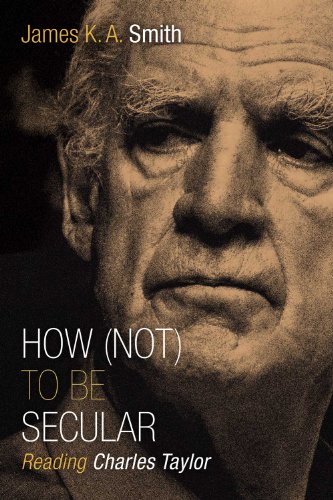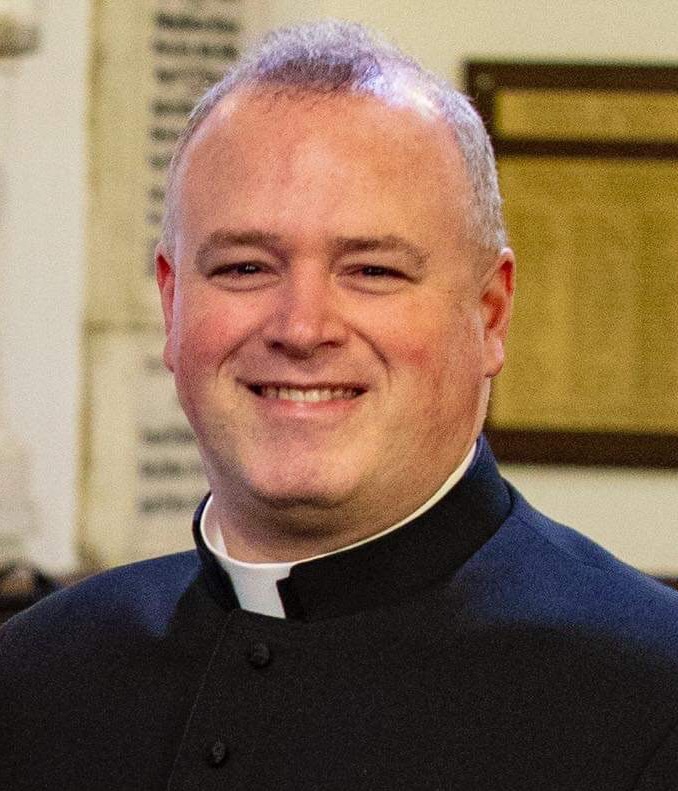It’s not often I recommend a ministerial must read; but if you’re a person in ministry in the modern age, you should own a copy of James Smith’s, How (Not) to be Secular (Eerdmans, 2014). The book is as provocative as the title suggests; an accessible guide to the oft times inaccessible work of the popular Canadian Philosopher, Charles Taylor’s 2007 Templeton-winning, A Secular Age.
 Why this book? This book is as much about interlocutors as it is about anything else. It’s one thing to recommend a good book — that would suffice. It’s another thing to recommend the paper trail one follows after reading a good book; that’s where it gets fun!
Why this book? This book is as much about interlocutors as it is about anything else. It’s one thing to recommend a good book — that would suffice. It’s another thing to recommend the paper trail one follows after reading a good book; that’s where it gets fun!
Paper trails: about three years ago, I noticed a trend. Reputable publishing houses were releasing books inspired by the thought of Canadians: Bernard Lonergan, theologian (University of Toronto, Regis College) and Charles Taylor, philosopher (McGill University, Montreal). Important works such as Meaning and Authenticity by Brian Braman (University of Toronto Press, 2008), and Randall Rosenberg’s, The Givenness of Desire (University of Toronto Press, 2017), were distilling very difficult contemporary theological and sociological issues.
I wasn’t surprised that many people in the church had not heard of Smith’s book. I was surprised that most people knew little about Charles Taylor, a popular guest of the CBC; fewer still could say anything about Bernard Lonergan, one of the 20th century’s most prolific theological minds.
The themes inspired by our two Canadian thinkers are quite timely; they constellate around matters of faith: authenticity & meaning, personhood & identity, formation & witness. Why the lack of familiarity with them? That’s a whole different article notwithstanding. James Smith’s How (Not) To Be Secular, stands in a long line of continental authors looking to “we the north” for a confident word in the storm of secularism. So, my intent is two-fold. First, this is a thumbs-up for Smith’s book. Second, it’s a shout out for the distinctively Canadian, the milieu that made people like Lonergan and Taylor fruitful.
What Smith’s book does well is to begin with deep feeling: what does it feel like living the secular world (Canada) today? The milieu we inhabit is haunted by transcendence, yet it fastidiously maintains “buffer zones to protect ourselves from such incursions”. While the book re-presents Charles Taylor’s 900 page Secular Age into an easy-to-read, accessible, and witty guide on how not to be secular in the secular age; Smith’s book challenges the ways the Church can (and should) be a force of resistance. By naming the transcendent, opening up the secular, and embracing an uncomfortable cross-pressure within the “malaise of imminence”, he proposes nothing less than the living of a courageous, authentic Christianity within the fastidiously defended buffered zone (i.e. ‘public’ space).
And while the thought of ringing church bells daily, or of cassock clad clerics appearing on the streets alongside Steam-punkers might not be every one’s cup-of-tea, after reading Smith’s book, I’m almost tempted to propose that it might not be far off the mark. Retreating from the realm of the secularized buffered zone is not the answer, kowtowing to secularism isn’t the answer either. But, creating cross pressure from within the zone — appearing as a witness — that’s where we need a boost of confidence. How (Not) to be Secular is a must read, because to quote another Canadian, we need to “ring the bells that still can ring.”

The Reverend Dan Tatarnic is Pastoral Associate at Christ’s Church Cathedral Hamilton.
How (Not) To Be Secular: A (Sort of) Book Review
It’s not often I recommend a ministerial must read; but if you’re a person in ministry in the modern age, you should own a copy of James Smith’s, How (Not) to be Secular (Eerdmans, 2014). The book is as provocative as the title suggests; an accessible guide to the oft times inaccessible work of the popular Canadian Philosopher, Charles Taylor’s 2007 Templeton-winning, A Secular Age.
Paper trails: about three years ago, I noticed a trend. Reputable publishing houses were releasing books inspired by the thought of Canadians: Bernard Lonergan, theologian (University of Toronto, Regis College) and Charles Taylor, philosopher (McGill University, Montreal). Important works such as Meaning and Authenticity by Brian Braman (University of Toronto Press, 2008), and Randall Rosenberg’s, The Givenness of Desire (University of Toronto Press, 2017), were distilling very difficult contemporary theological and sociological issues.
I wasn’t surprised that many people in the church had not heard of Smith’s book. I was surprised that most people knew little about Charles Taylor, a popular guest of the CBC; fewer still could say anything about Bernard Lonergan, one of the 20th century’s most prolific theological minds.
The themes inspired by our two Canadian thinkers are quite timely; they constellate around matters of faith: authenticity & meaning, personhood & identity, formation & witness. Why the lack of familiarity with them? That’s a whole different article notwithstanding. James Smith’s How (Not) To Be Secular, stands in a long line of continental authors looking to “we the north” for a confident word in the storm of secularism. So, my intent is two-fold. First, this is a thumbs-up for Smith’s book. Second, it’s a shout out for the distinctively Canadian, the milieu that made people like Lonergan and Taylor fruitful.
What Smith’s book does well is to begin with deep feeling: what does it feel like living the secular world (Canada) today? The milieu we inhabit is haunted by transcendence, yet it fastidiously maintains “buffer zones to protect ourselves from such incursions”. While the book re-presents Charles Taylor’s 900 page Secular Age into an easy-to-read, accessible, and witty guide on how not to be secular in the secular age; Smith’s book challenges the ways the Church can (and should) be a force of resistance. By naming the transcendent, opening up the secular, and embracing an uncomfortable cross-pressure within the “malaise of imminence”, he proposes nothing less than the living of a courageous, authentic Christianity within the fastidiously defended buffered zone (i.e. ‘public’ space).
And while the thought of ringing church bells daily, or of cassock clad clerics appearing on the streets alongside Steam-punkers might not be every one’s cup-of-tea, after reading Smith’s book, I’m almost tempted to propose that it might not be far off the mark. Retreating from the realm of the secularized buffered zone is not the answer, kowtowing to secularism isn’t the answer either. But, creating cross pressure from within the zone — appearing as a witness — that’s where we need a boost of confidence. How (Not) to be Secular is a must read, because to quote another Canadian, we need to “ring the bells that still can ring.”
The Reverend Dan Tatarnic is Pastoral Associate at Christ’s Church Cathedral Hamilton.
The Reverend Dr. Daniel Tatarnic is priest-in-charge at St. Alban's, Beamsville.
Keep on reading
Our Power, Our Planet: Earth Day Webinar Inspires Local Climate Action
Taking Root — Mini Forests and Parish Partnerships
Forming Faith Across the Diocese: Meet Monica Romig Green
Cherishing Creation: Earth Day at Incarnation
Euchre and the Meaning of Life
The Radical Christ: Reclaiming the Heart of Christianity